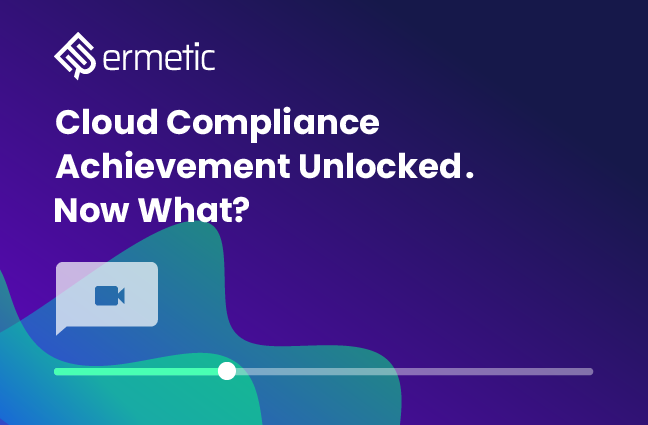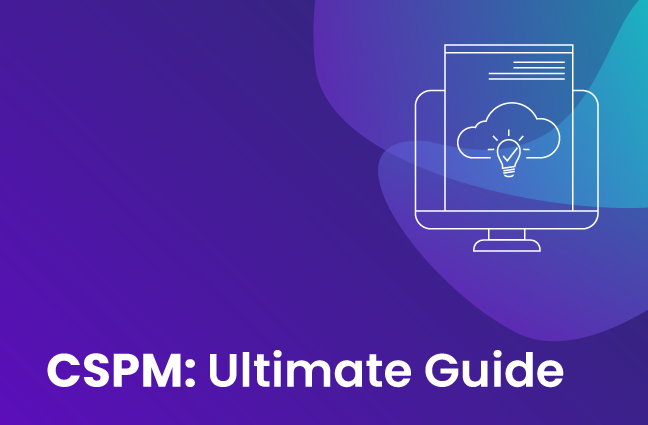What Is Cloud Security Posture Management (CSPM)?
CSPM is a cloud security category that addresses the need to prevent cloud misconfigurations and meet standards for cloud security.
CSPM is a cloud security category that addresses the need to prevent risk from cloud misconfigurations, and meet regulatory requirements and other standards for cloud security.
So what actually is CSPM?
A CSPM platform automatically monitors configuration data from cloud applications and services for the purpose of identifying and preventing misconfigurations that could lead to threats, risks, vulnerabilities and account hygiene violations. The information it finds can be mapped to external benchmarks, frameworks and regulatory standards - like CIS, GDPR, SOC2, PCI DSS, ISO and HIPAA - or internal policies and guidelines. This makes CSPM a good tool for compliance management.
CSPM offers a wide view of data storage, the network and configuration settings. Robust CSPM platforms are complemented with additional capabilities that go deeper. They provide auto-remediation of cloud misconfigurations or non-compliance, and can provide granular visibility and insights into risky identities and excessive permissions.
CSPMs are designed for use by Security, IAM and DevOps/Development practitioners as well as compliance practitioners.
What are the benefits of a Cloud Security Posture Management platform?
A CSPM (Cloud Security Posture Management) platform offers many benefits:
- Visibility into cloud services and workloads
- Prevention of data breaches by continuously monitoring and identifying cloud misconfigurations
- Prevention of policy violations and misconfigurations through alerts
- Enforcement of policies and compliance
- Enforcement of cloud security best practices
- Reduction in overhead related to the ongoing monitoring of misconfigurations and compliance
Who needs Cloud Security Posture Management?
Misconfigurations put cloud environments at risk as they can be exploited by threat actors to access sensitive information and critical assets, either by making these assets public or by enabling lateral movement inside the cloud environment. In addition, many organizations are looking for a solution to help them stay compliant with regulations like GDPR, HIPAA, PCI DSS, SOC 2, ISO 27001, NIST and more. These include businesses in industries like finance and healthcare as well as a growing number of organizations that aspire to meet these regulations as part of their security strategy. But it’s challenging for security teams to have visibility across their cloud environment and to identify, remove and prevent risk at scale.
A CSPM platform addresses both challenges by providing automated monitoring of cloud configurations and settings, alerting about vulnerabilities and non-compliance, and auto-remediating the risks.
Consequently, many organizations prioritize CSPM among their cloud security programs. A recent IDC survey commissioned by Ermetic found that 84% of organizations are using or plan to implement a CSPM tool.
Key components of a CSPM
To support compliance and best practices in public cloud configuration, CSPM offers the following capabilities:
Asset Inventory Visualization
Ongoing discovery and management of multi-cloud workloads and services.
Risk Analysis
Monitoring and identification of risks associated with misconfigured infrastructure. Advanced CSPM solutions also analyze unused identities, excessive permissions and risky privileges, and how they can lead to exfiltration of sensitive data.
Environment Mapping
Visualization of network interconnects, security groups and access pathways to stored data.
Compliance Reporting
Auditing and reporting against regulations and benchmarks.
Anomaly Detection
Identification of anomalies, and actionable governance or remediation for vulnerabilities or threats
How does a Cloud Security Posture Management platform work?
A CSPM platform starts by gathering configuration data from cloud services. This data is monitored for risk and analyzed against compliance benchmarks. Any vulnerabilities or anomalies generate alerts for security and engineering, and are also presented in a comprehensive dashboard. Advanced solutions also auto-remediate these threats.
CSPM vs. CIEM
Cloud Security Posture Management solutions provide visibility into configurations and help organizations achieve compliance. They do not, however, answer all cloud security needs. In modern architectures, identity is the new perimeter and credentials are the number one attack vector (Verizon’s 2022 Data Breach Investigations Report (DBIR)).
CIEM (Cloud Infrastructure Entitlements Management) platforms manage and secure cloud identities by providing visibility into cloud environments, identifying permissions-related threats and automating the detection, analysis and mitigation of access risk in the cloud.
A CIEM complements CSPM by enabling:
- Deep Visibility. Visualization of identities, resources and the relations between them, in the cloud and across clouds.
- Detection of Identity-related Risk. Identification of excessive permissions, unused identities and toxic combinations.
- Mitigation and Auto-Remediation. Prevention of risks through principles like least-privilege and Just in Time (JIT) access.
- Anomaly Detection. Continuous monitoring and risk analysis.
A unified CSPM-CIEM solution provides risk analysis and remediation across configurations, permissions and behavior in one single platform.
CSPM vs. CNAPP
CSPM offerings are a key pillar of Cloud-Native Application Protection Platforms (CNAPP), alongside other essential cloud security lifecycle needs including Cloud Identity Entitlement Management (CIEM), Cloud Workload Protection (CWP), Infrastructure as Code (IaC) security and Kubernetes Security Protection Management (KSPM).
Alone, CSPM solutions are unable to provide the depth, scope and runtime-to-production lifecycle protection that effective cloud security requires. According to Gartner, enterprises can consider using CSPM solutions as an alternative to CNAPP provided they are integrated with CWPP and container scanning solutions. Such efforts would incur considerable integration work and even then coverage gaps would remain such as the inclusion of identities and entitlements in assessing and reducing the cloud environment’s risk and attack surface.





